Travelling though the Andes

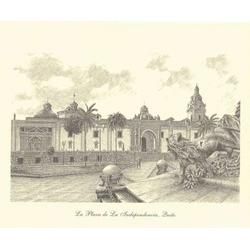
Independence Square in Old Quito
"Find out more about world heritage sites here"TM

It was my good fortune, and privledge to live and work in Ecuador for a period of about three and one-half years between 1998 and 2001. These were hard times for the country. Leadership was crumbling and longstanding structural economic problems were once again coming to a boil.The Ecuadorian people are a stoic lot.


"This is the City of Loja where I lived for nearly four years." TM
Photos of the City and Surroundings
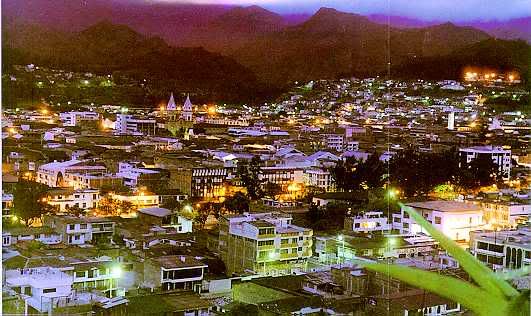
The Cuxibamba Valley
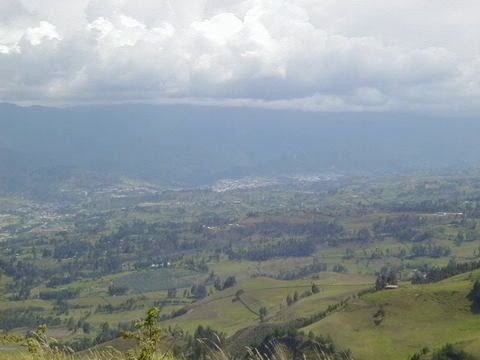
Videos of the Region of Loja
"The People of nearby Saraguro (The Sacred Valley) are the last descendants of Athualpa, the Incan Emperor of the Northern Kingdom of Ecuador. They wear black in perpetual mourning for the Incan Emperor and the Empire.
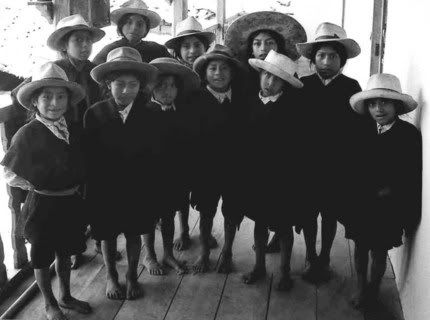
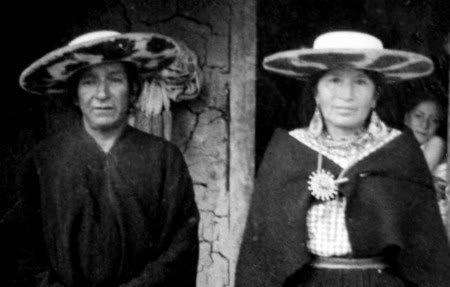
"Vilcabamba: (The Place of Refuge), Ecuador's fountain of youth.
The Valley of Long Life:Does Vilcabamba hold the secret to immortality?" TM
When the medical world began studying longevity seriously in the 1960s, scientists flocked to Abhazia, Georgia, the Hunza, and Vilcabamba, Ecuador, sites renowned for the long life spans of their residents. In 1978, Dr. Richard Mazess published a study claiming that in Vilcabamba everyope was exaggerating their true ages. Since proper birth records did not exist, he based his premise on a genealgical survey of families in Vilcabamba, combined with baptism records that are for all purposes illegible.
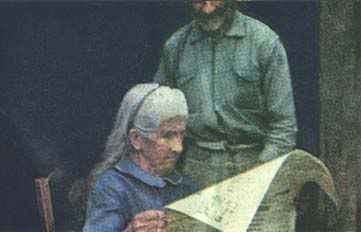
In 1982, Dr. Morton Walker arrived in Vilcabamba to investigate the cell mineralization of the local residents and its relationship with genetÌcs and the natural environment. Though Dr. Walker was not in Vilcabamba for very long, he managed to pinpoint numerous very interesting facts that establish the direction of future research here.
For a long time there had been some controversy over whether the supposed longevity in Vilcabamba was due to genetic factors. Since this area has been renowned in Ecuador and Peru for many generations as a sacred place where old people abound, some scientists were sure that it must be a gene that was responsible.Morton Walker took hair samples from the nape of numerous residents of various ages. These samples were carbonized and analysis was performed in a California lab.
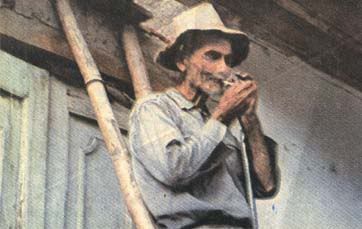
The results showed exactly why the folks of Vilcabamba have healthy, long lives. When examining the data on children, one finds the kind of random mineralization that is common everywhere and is mostly due to genetic variation. By the time that they are young adults, there are many similarities in their cell mineralization.
Once the people of Vilcabamba are 50 years old, their body minerals are virtually identical, and accumulative toxic metals are at very low levels. Dr. Walker also had samples of the river water and various foods analyzed to see how their mineral ratios related to the cell minerals in the populace. These were even more revealing. The ratio of minerals common in all the old people was the same as the mineral ratio ofthe local water.
Foods that were irrigated with river water also had the same basic ratio. So, what's going on at the cellular level in Vilcabamba?Dr. Walker was already studying tbe relatively new field of mineral chelation at that time. It was not difficult for him and the lab technician, Gary Gordon, to connect Vilcabamba and natural chelation. Mr. Gordon stated that the people of Vilcabamba are getting a sophisticated chelation treatment from their environment for free. Dr. Walker claims that the ratio of calcium, magnesium and manganese in the water is virtually perfect, preventing calcium from leaving the bones once it is absorbed.
This obviously is the reason that Vilcabambans, who consume less than half the calcium that most Europeans do, never suffer from osteoporosis. This is what Richard Mazess missed while worrying about exactly how old everyone really was. Besides preventing osteoporosis, this ratio of minerals keeps calcium out of the blood where it will inevitably mix with nasty cholesterol and clog up the artenes and veins. All this loose calcium floating around in most older people's blood is stiffening up everything in their bodies that should be supple.
And of course, everything that should be hard and durable begins to crumble. In Vilcabamba, old people can still heal a broken bone, and they don't suffer from any diseases that have to do with calcium metabolism.In Vilcabamba, old people can still heal a broken bone, and they don't suffer from any diseases that have to do with calcium metabolism. What is it about the food and water of this place that makes it special? Fifteen kilometers above Vilcabamba is the continental divide and the highest local peaks. Up there it is almost constantly precipitating in one way or another. All water, including rain water, has some mineralization.
Only water distilled in a lab is pure. So, when our rain, drizzle or sleet fall on these mountains it is already carrying some dissolved solids. The ground on the very high ridges of the Andes is covered with thick grass-like plants that grow and die; but since they can't really rot at the temperature up there, they just continue to grow one on top of the other. What this creates is a deep vegetable sponge that filters and mineralizes the water as it passes through. The Andes in this area were covered by glaciers during the last ice-age.
These glaciers carved out shallow basins in the rock at about 3,000 meters of elevation. Now, they are lakes and their water have virtually the same mineralization as the river water in the valley below. The kinds of rocks that make up the lower terrains of the Andes are not particularly reactive to H20. So, all the minerals in Vilcabamba water, and the most important ones in the irrigated food chain are coming from a vegetable source.
These grasses of the Andean tundra and the forests that grow in wind-protected clefts are feeding on glacier-ground rock particles of an ancient age. Fortunately for Vilcabamba, far below, there are no dikes of precious metals lacing the upper watershed. Otherwise gold miners would have long ago contaminated the high creeks with mercury and other toxic by-products found all over the Andes. In fact, gold is found almost every place else around, besides the Vilcabamba watershed. Also, these highlands are too rough and rocky for agricultural purposes.
Therefore nobody's been fertilizing or fumigating up there. No one even lives up that high, since pasture animals cannot survive on this rough grass. Its minerals are balanced, but it has almost no protein. This tundra, cloud-forest area is useless, besides producing the most therapeutic water on the earth's surface. Some folks in the USA are already copying the mineralization of Vilcabamba in the lab. They sell the anti-oxidizing trace minerals of Vilcabamba and of course the bone preserving ratio of macroelements. Naturally, their products are far too expensive for even the richest people in Vilcabamba.
"There is a long history of biogeography, dating back to Linnaeus (1700's, Swedish) and Darwin and Wallace (1800's, British), when people started exploring the world and noting how species were distributed.Two eminent ecologists, the late Robert MacArthur of Princeton University and E. 0. Wilson of Harvard, developed a theory of "island biogeography" There have been several major developments since the early 1950's that have elicited new interest in biogeography. The one that stands out is the theory of plate tectonics and continental drift, which was only widely accepted in the late 1960's, although it was proposed as early as the 1850's." TM
Podocarpus Gateway to the Amazon

BIOGEOGRAPHY and the Amazon
"My last trip through the Andes was to Cuzco and Machu Pichu -An entire city designed as a place of refuge from an alien invading culture- Europeans.
Unfortunately I arrived in Lima on the heals of a half a million strong demonstration against Fujimori in Lima that tragically turned violent injuring tens of thousands and killing six."

©2005 Terry Mockler
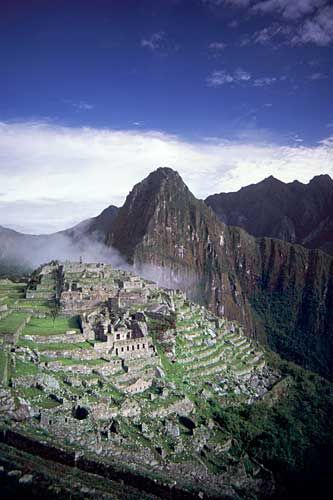

0 Comments:
Post a Comment
Subscribe to Post Comments [Atom]
<< Home